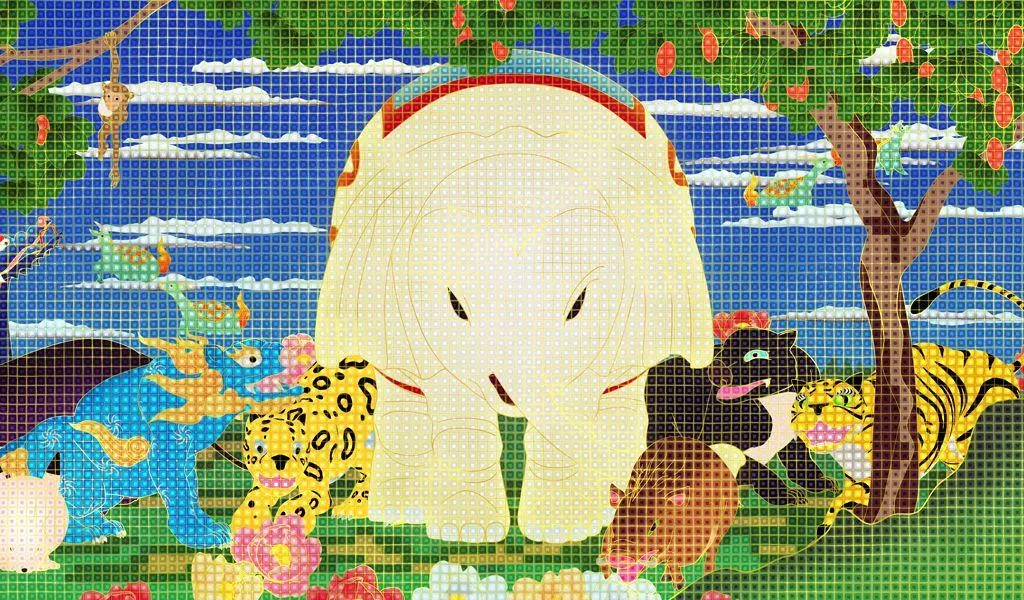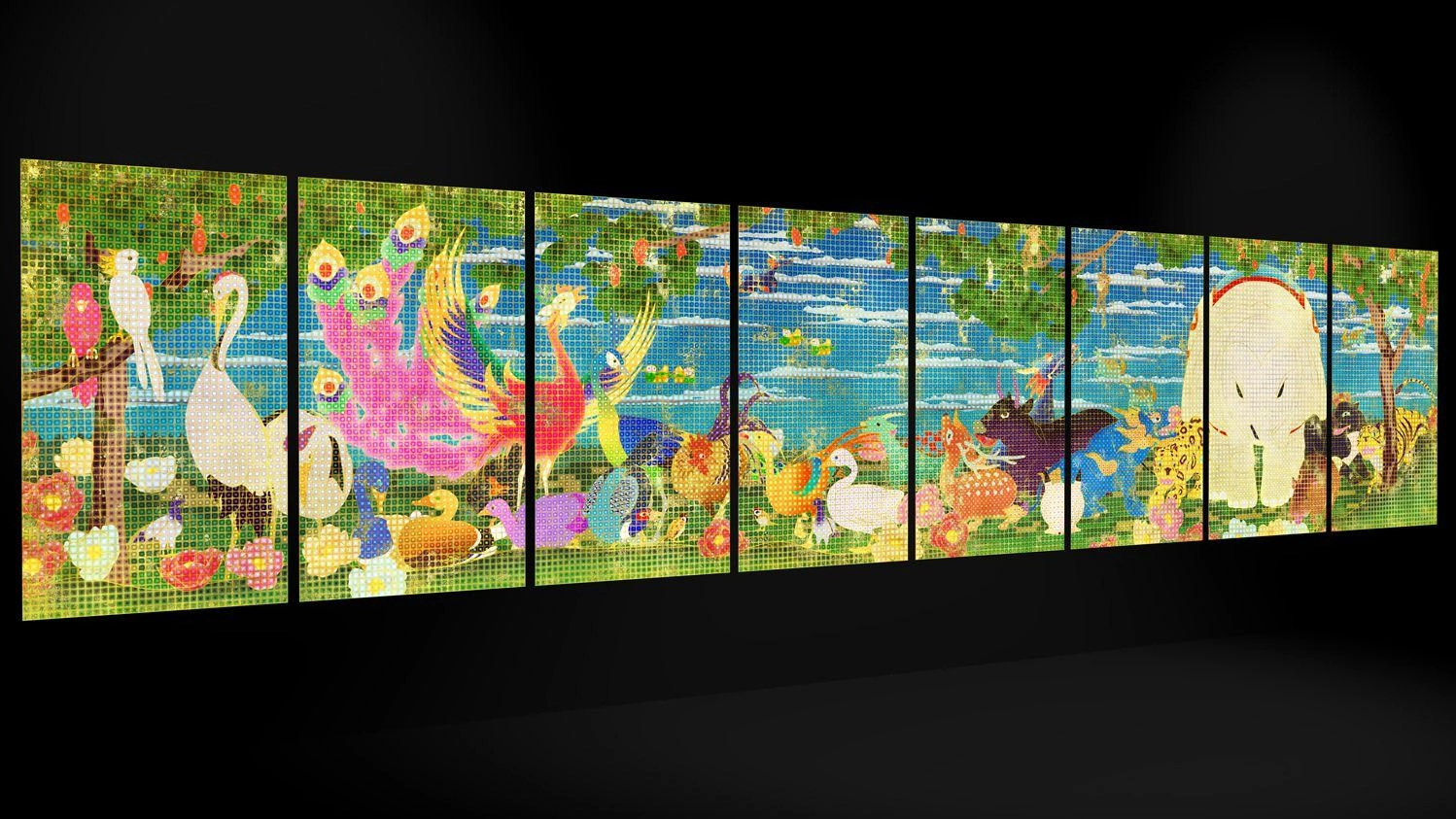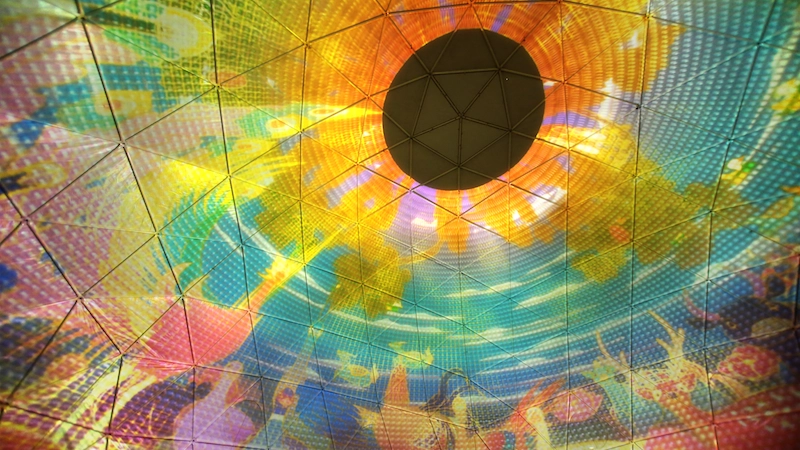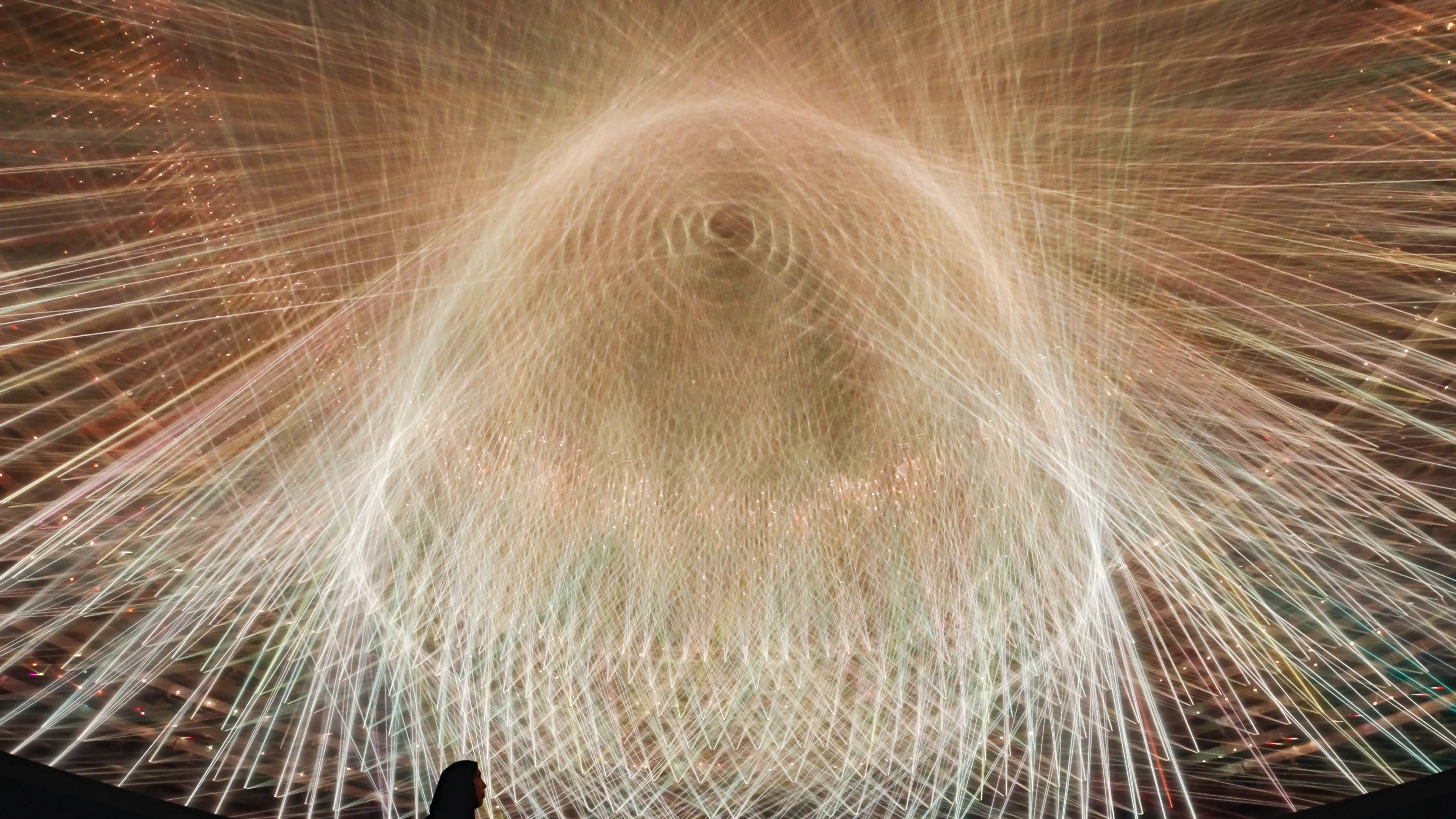Nirvana – Dome Version
Ito Jakuchu (1716 - 1800) was an early modern Japanese painter who was active in Kyoto in the mid-Edo period. Jakuchu has left us with a unique style of painting where the surface is made up of a grid of tens of thousands of squares or “tiles” that are individually colored.
This artwork, “Nirvana”, was inspired by the screen paintings; “Birds, Animals, and Flowering Plants”, and “Trees, Flowers, Birds and Animals”.
ProcessteamLab believes that traditional “flat” Japanese painting has a different spacial logic to that of western perspective. We call this logic Ultra Subjective Space. For this artwork animals are created in 3 dimensions and they move in a 3 dimensional space. We then, however, use the logical structure of spatial awareness of traditional Japanuse painting to “flatten” the work.
The colors of the work are produced by the combination of the colors of hundreds of thousands of squares, and in each square there are layers of colors and patterns that combine to form a myriad of colors. For example, a square that is colored in red and blue, will give the effect of purple in the virtual space.
The squares grid is fixed whilst the 3 dimensional space moves, this results in a fast time axis within the squares. When viewed from afar however the animals move on a slow time axis. This creates a new visual effect of an animation with dual time axes; that of rapidly changing color of the square, and that of the slow movement of animals and plants. In addition, some parts of the image are pixelated, filling in the square with its main color, immobilizing the pixels of the animals and plants in the squares whilst the animals continue to move. The result is a new visual representation that differs from that of pixel art. Furthermore, the 3 dimensional animals are also at times pixelated in 3 dimensions (three-dimensional cubes) creating a abstraction that combines with the other pixels and squares to produce a new type of visual expression.
The version shown here was projected in 360degress in the dome at Tokyo Designers Week.
Concept of “Nirvana - Dome Version”
The square paintings of Jakuchu remind us of computer generated pixel art. It has been proposed that Jakuchu’s squares pictures were inspired by and the result of industrial production constraints in the designs of Nishijin (traditional high-quality silk fabric that is woven in Nishijin, Kyoto). Pixel art was also born from functional limitations, now that functional limitation no longer exists but pixel art is still a very popular form of expression. This is perhaps why we feel an intuitive digital sense of Ito Jakuchu’s squares work.
The colors of Jakuchu’s work are the result of the optical phenomena of visual mixing of color combinations within the squares. It appears as if Ito Jakuchu understood optical mixing of colors at a time before the art movements of Impressionism and Pointillism. The animals and plants in this artwork are created in a virtual three-dimensional space and then flattened in line with what we consider to be the logical structure of the spatial awareness of traditional Japanese Art. Then, in order to utilize the optical phenomenon of visual mixing, the squares of the surface are layered with the squares of the three-dimension space.
Seen as a whole from a distance the colors of Nirvana shine brilliantly due to visual mixing, and moves on a slow time axis. When viewed closer the color that is created by the pattern of the animals and plants moves rapidly, but the squares on the screen do not move and the result is a world that changes on a fast time axis. The combined result is a new visual expression of an overwhelming amount of information, the animation of the animals and the images of the squares with two time axes coexisting.







